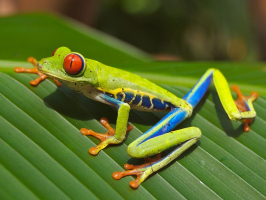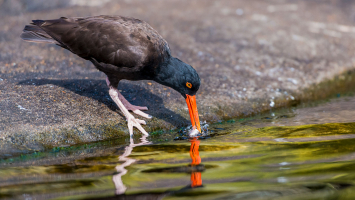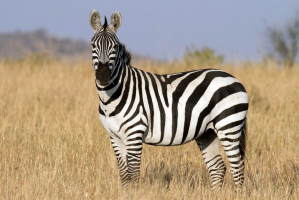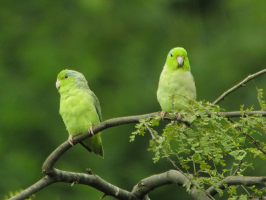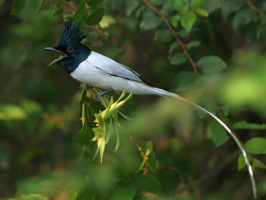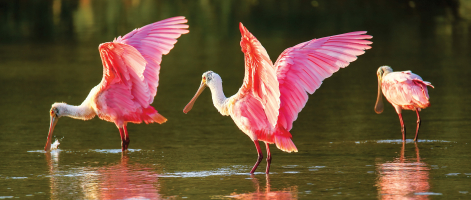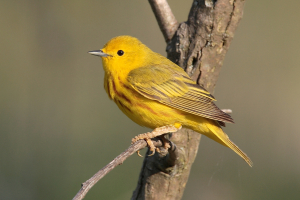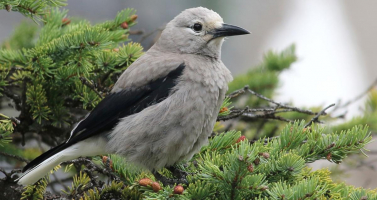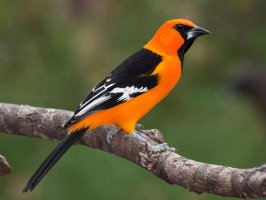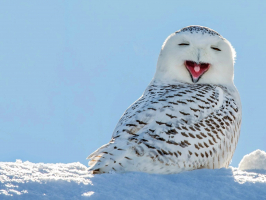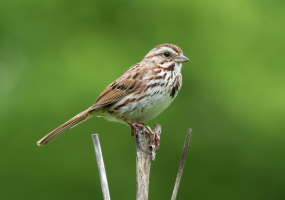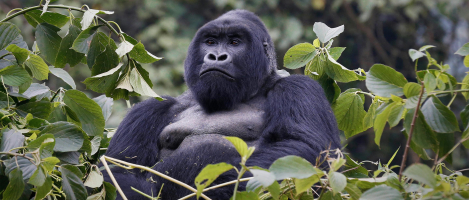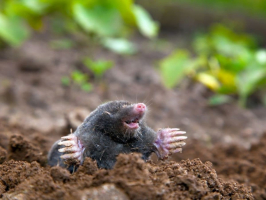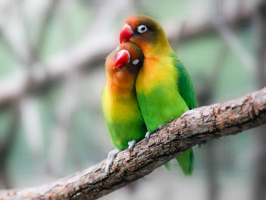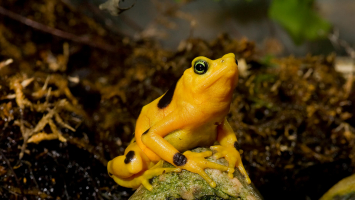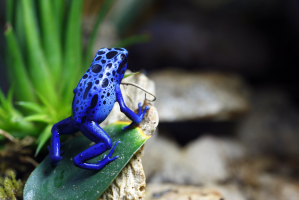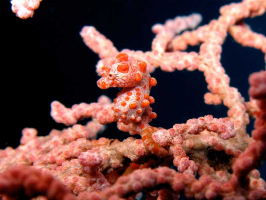Top 10 World's Beautiful Red Animals
Red is a symbol of many things around us, for example, the color of blood, and is also a color that symbolizes love, courage, and sacrifice. The color red also ... read more...plays a very important role in nature, as it appears on many animals and plants, it often reminds us to keep our guard and distance when we want to get close to them. However, humans find in these red animals a hidden attraction and beauty. Below are the most beautiful red animals in the world, let's find out!
-
Cymothoe Tsangaris is a species of butterfly of the family Nymphalidae. The Guinean woodlands along the coast of West Africa and the Mongolian forests in Central Africa are both home to the butterfly species Cymothoe Tsangaris. Its wings are a stunning "blood-red", earning it the nickname "Blood Red Glider".
This butterfly has back is a vivid blood red color fringed with black lines, as opposed to its lower body, which is covered in a dull shade of gray or brown. Scientists have actually tried to split this into two separate species, based on the different flowers they specialize in as adults, as well as the physical appearance of the females. The species is mostly arboreal, staying towards the forest canopies in the morning and late afternoon, and early evening before descending to lower levels of the forest.
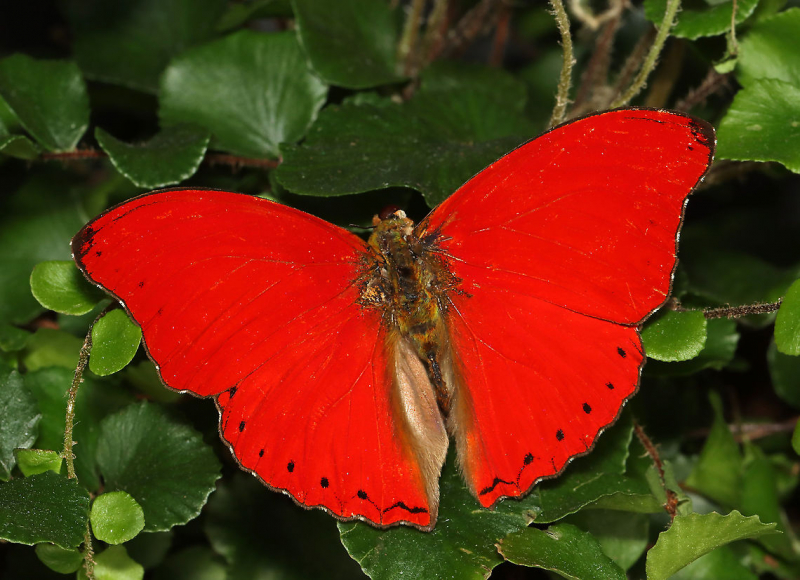
JungleDragon 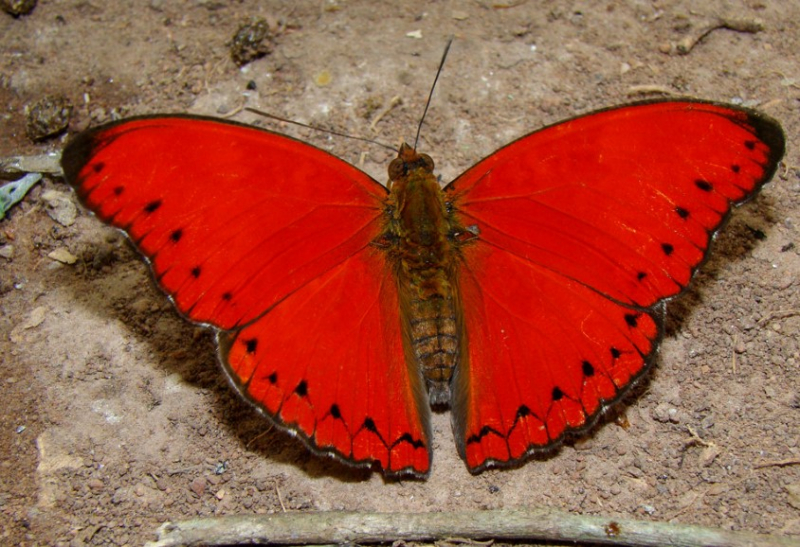
TDF Blog -
One of the largest and most beautiful members of the macaw family is the Scarlet Macaw. They live in Central and South America's wet evergreen woods. They are renowned for having vibrant plumage, blue backs and brilliant red fronts, and yellow upper wings with green edges. Another distinguishing characteristic of a scarlet macaw is its powerful, curled beak. The tip is black, while the upper section is white. An adult scarlet macaw measures 80 to 90 cm in length and can weigh up to 1.5 kg. They fly quite well and may go at speeds of up to 35 mph. Scarlet macaws have a longer lifespan as well. These animals have a lifespan of 40-50 years. It is said to be that scarlet macaws in captivity can live up to 75 years.
The magnificent, scarlet macaw is also among the most intelligent birds in the world. They are easily taught language, sounds, and tricks while kept in captivity. A well-trained scarlet macaw is claimed to be able to recognize both colors and shapes. Scarlet macaws are boisterous parrots as well. They have a variety of vocalizations, including screeches and squawks. Their primary food sources include insects, fruits, seeds, and nuts. Scarlet macaws have a powerful, curved beak that can readily crush any nuts.
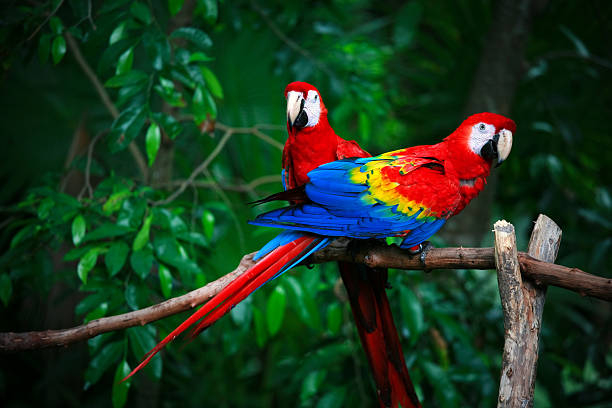
iStock 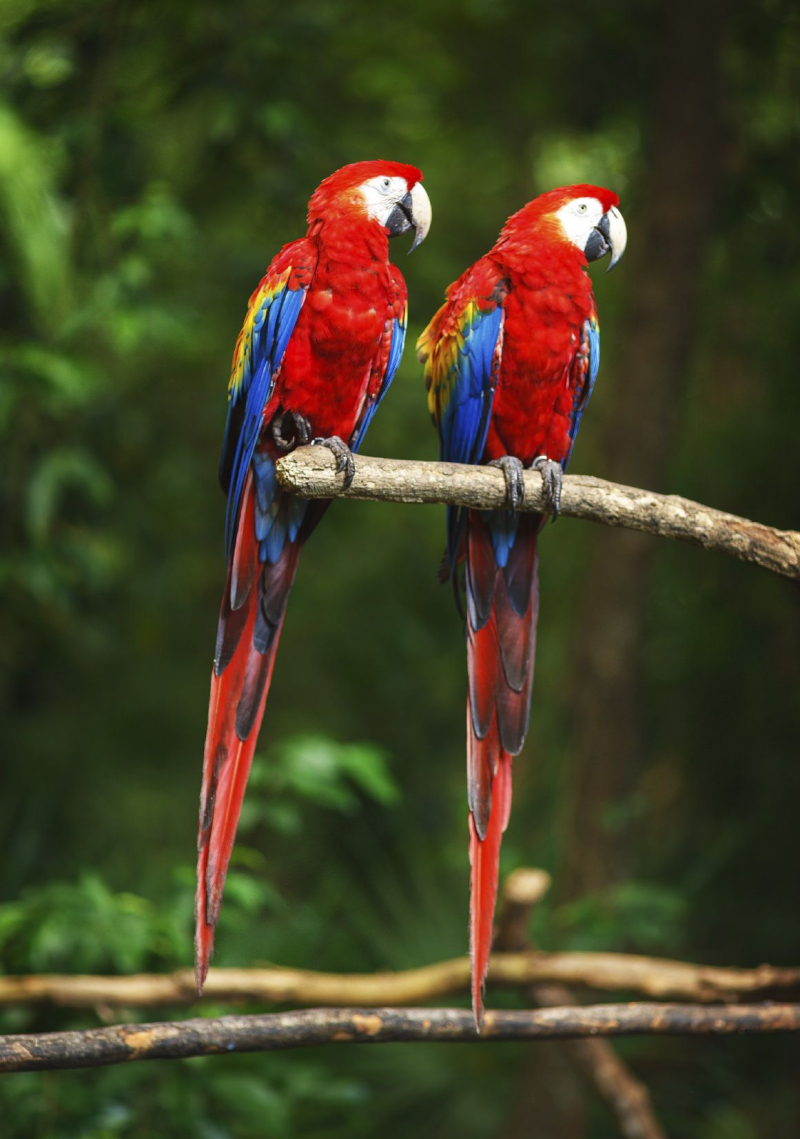
The Spruce Pets -
The Mediterranean Red Sea Star (Echinaster sepositus) is a species of starfish from the East Atlantic, including the Mediterranean Sea. It is found at depths of 1 to 250 m (3–820 ft) in a wide range of habitats, including rocky, sandy, and muddy bottoms, and seagrass meadows (Posidonia oceanica and Zostera). The fertilization of these starfish is totally external. Their sexes are separated, although there are also hermaphroditic specimens, this is not very common. They tend to reproduce during autumn. The males tend to have an upright posture when they throw their sperm through the water and that’s when fertilization begins.
It comprises a small central disc and five somewhat thin limbs. It typically measures up to 20 cm in diameter, but it occasionally grows as large as 30 cm. Its surface texture is soapy, in contrast to the superficially similar Henricia starfish, and it is a vivid orange-red color (another somewhat similar species from the same region is Ophidiaster ophidianus). The animal may stretch its deep red gills from the surface's equally placed pits (papula).

Atlantis Gozo 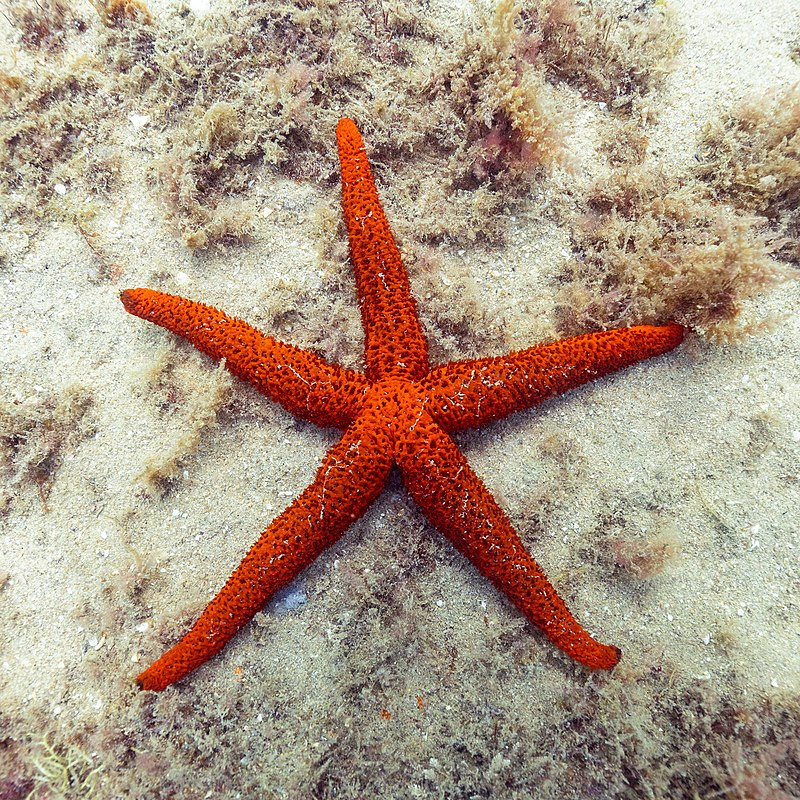
Wikipedia -
The Northern Cardinal (Cardinalis cardinalis) is a bird in the genus Cardinalis. Southeast Canada, the eastern United States (from Maine to Minnesota to Texas, New Mexico, southern Arizona, and southern California), and further south via Mexico, Belize, and Guatemala are all places where it can be found. In several places, like Bermuda and Hawaii, it is also an invasive species. Woodlands, gardens, shrublands, and marshes all make up its habitat.
The northern cardinal is a medium-sized songbird with a body length of 21–23 cm. It has a characteristic crest on its head and a mask covering its face, which is gray on the female and black on the male. The female has a reddish olive tint, while the male is a bright red. Both sexes possess prominent raised crests and bright coral-colored beaks. The beak is cone-shaped and strong. Although it sometimes eats fruit and insects, the northern cardinal is mostly a granivore. The male displays a territorial attitude and sings to demarcate his domain. The male feeds the female seed while they are engaged in wooing. Apiece year, two to four clutches of three to four eggs each are laid.
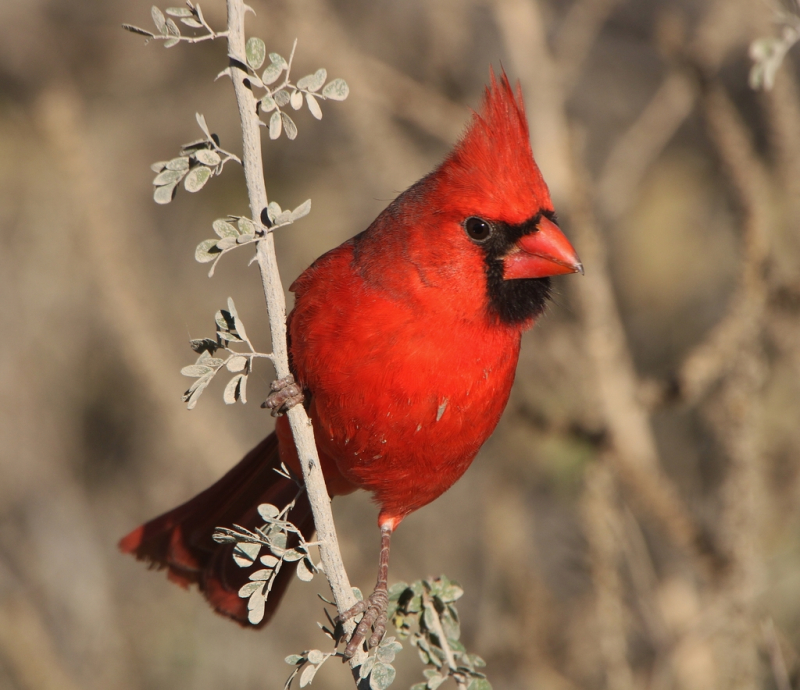
eBird 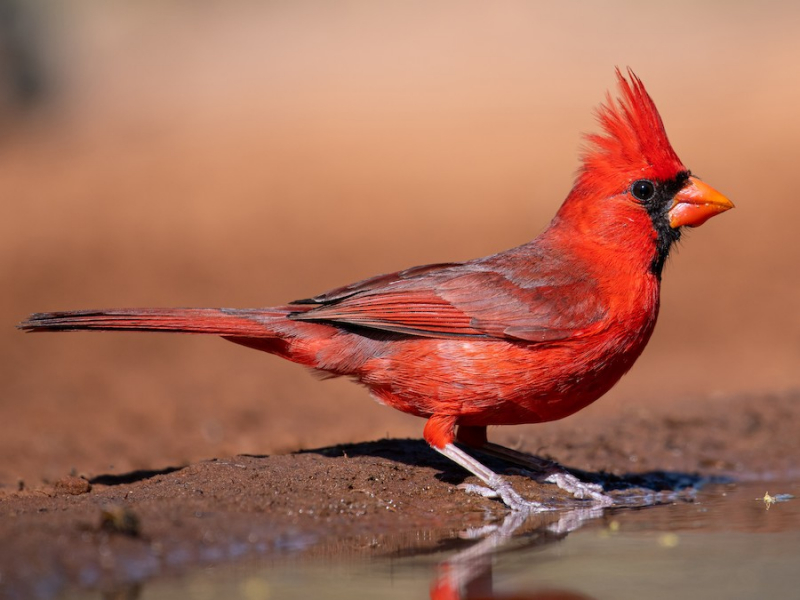
eBird -
The Scarlet Ibis (Eudocimus ruber) is a species of ibis in the bird family Threskiornithidae. It resides in South America's tropical region and a portion of the Caribbean. It has the most physical characteristics with the other twenty-seven species of ibis that are still in existence, but its unusually vibrant red coloring distinguishes it from the rest. One of Trinidad and Tobago's two national birds, its Tupi-Guarani name, guará, is also a component of the names of some Brazilian coastal communities.
The adult bird's plumage is almost entirely red. Only the tips of their wings stray from the name-giving color, though the feathers may display other tones and tints. Only the longest primaries have these tiny but dependable markings, which are rich inky black (or occasionally dark blue). The rest of the bird's plumage is "a vivid orange-red, almost luminous in quality". Scarlet ibises have red feet and bills, however, the end of the beak can occasionally be blackish. They have a decurved, long, narrow bill. In flight, they have long, stretched legs and lengthy necks.
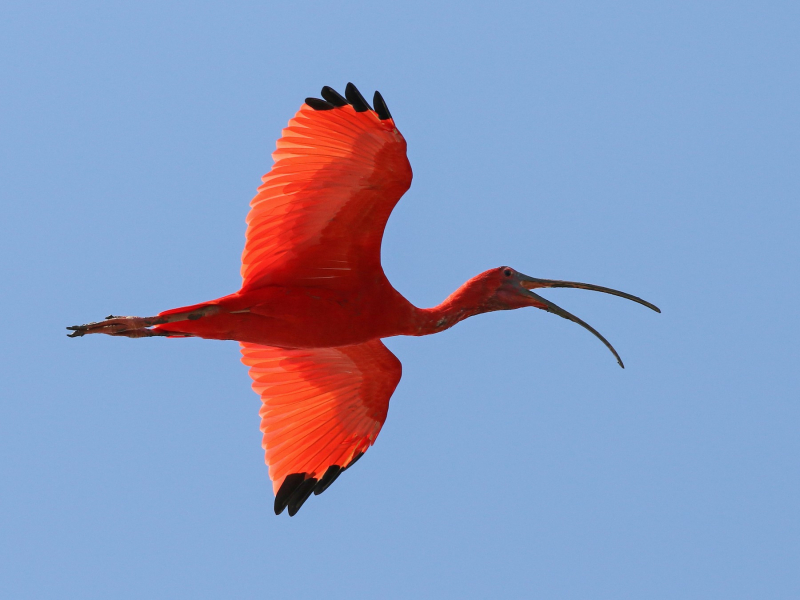
eBird 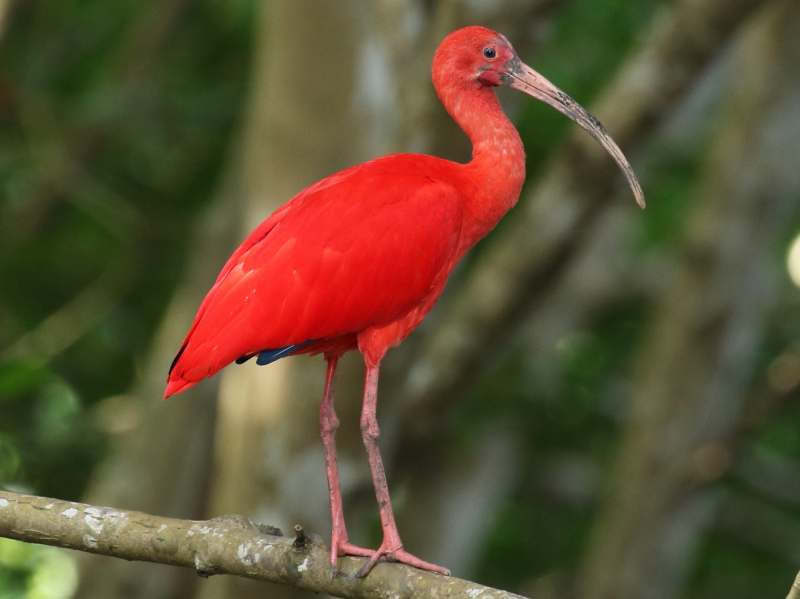
eBird -
Any of the around 5,000 widely dispersed species of Ladybugs (family Coccinellidae; insect order Coleoptera), often known as ladybird beetles, got their names during the Middle Ages when they were referred to as "beetles of Our Lady". Ladybird beetles are typically 8 to 10 mm (0.3 to 0.4 inch) long and hemispherical in form. Ladybugs are not only pretty but cute, with their round bodies and the black polka dots that cover their elytra, which are often cheerful red, orange, or yellow. An illustration of the usual color pattern of ladybird beetles is the nine-spotted ladybird beetle (Coccinella novemnotata), which has four black dots on each reddish-orange wing cover (elytron) and one shared spot.
Since the life cycle lasts for roughly four weeks, numerous generations are created each summer. The long, slender, soft-bodied larvae prey on other insects and insect eggs. They are typically gray with blue, green, red, or black markings. After going through four growth phases, the larvae cling to a surface and pupate in their final larval skin. Every winter, several ladybird beetles typically hibernate nearby in large groups.
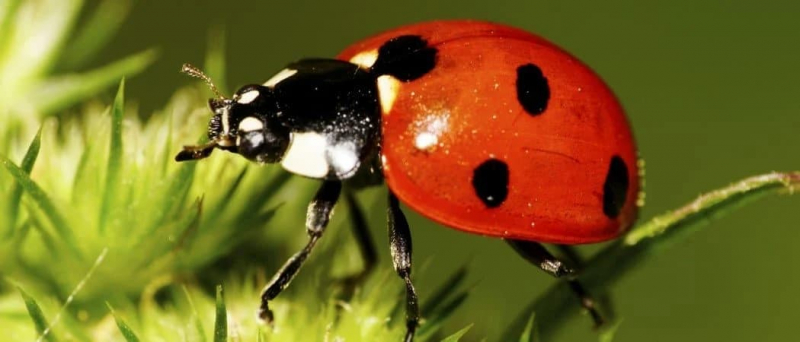
AZ Animals 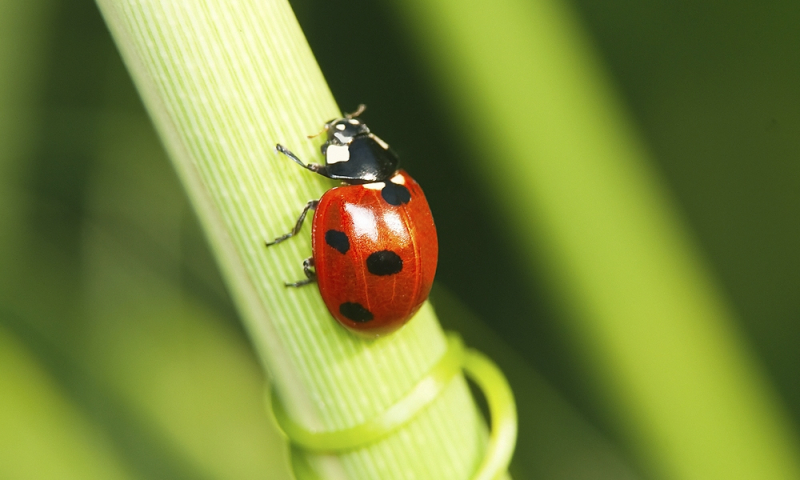
WorldBirds -
The Red Squirrel (Sciurus vulgaris), a species of tree squirrel found in both Europe and Asia, belongs to the genus Sciurus. The red squirrel is a rodent that lives in trees and eats mostly plants. Numbers have sharply dropped in recent years in Italy, Ireland, and Great Britain. The introduction of the eastern grey squirrel (Sciurus carolinensis) by humans from North America is linked to this decline. However, due to conservation initiatives, public awareness, and the growing numbers of pine martens, a European predator that preferentially kills grey squirrels, the population in Scotland is stabilizing.
The red squirrel's coat changes color depending on the season and its environment. The squirrel always has a white-cream color on its bottom. The red squirrel sheds its coat twice a year, changing between August and November from a lighter summer coat to a thicker, darker winter coat with visibly larger ear tufts (a key characteristic of this species). The Eurasian red squirrel can be distinguished from the American eastern grey squirrel by its smaller size, lighter, redder overall coat color, and ear tufts (in adults). Red serves as a camouflage when viewed against pine tree bark.
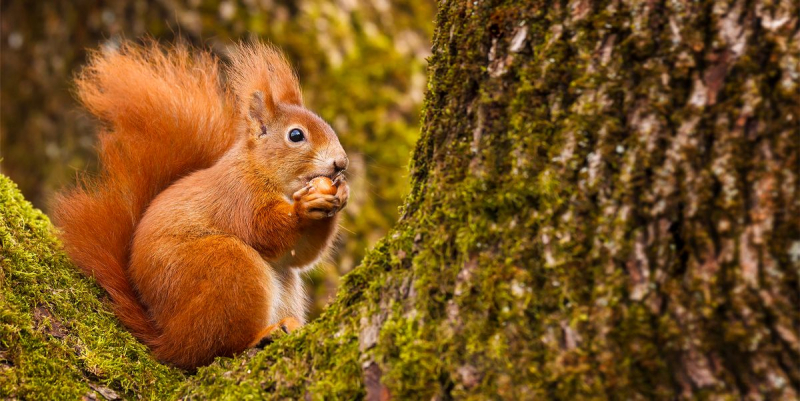
Country Living Magazine 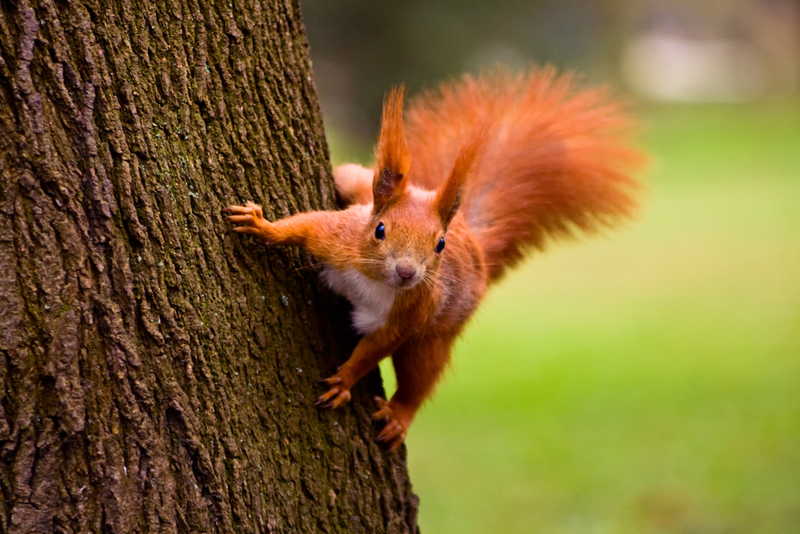
iStock -
The Red Panda (Ailurus fulgens), also known as the lesser panda, is a small mammal native to the eastern Himalayas and southwestern China. It prefers steep slopes with dense bamboo cover close to water sources. It lives in the temperate broadleaf and mixed forests as well as coniferous forests. It is mostly arboreal and solitary. In addition to fruits and blooms, it primarily eats bamboo shoots and leaves. Poaching, habitat loss through deforestation, and habitat fragmentation all pose threats to it. Since 2015, the IUCN Red List has classified the species as Endangered. In every country in the world, it is protected.
The belly and legs of the red panda are black, and its coat is primarily red or orange-brown. The bushy tail has red and buff ring patterns, a dark brown tip, and predominantly white borders on the nose, cheeks, brows, and inner ear margins. In a setting with crimson moss and white trees covered in lichen, the coloration seems to act as camouflage. Longer and rougher guard hairs contrast with fluffier, shorter guard hairs in the dense undercoat. The guard hairs on the back are round in cross-section and range in length from 47 to 56 mm. Around the mouth, lower jaw, and chin, it has whiskers that are moderately lengthy. The animal can walk in snow thanks to the fur on the soles of its paws.

Wikipedia 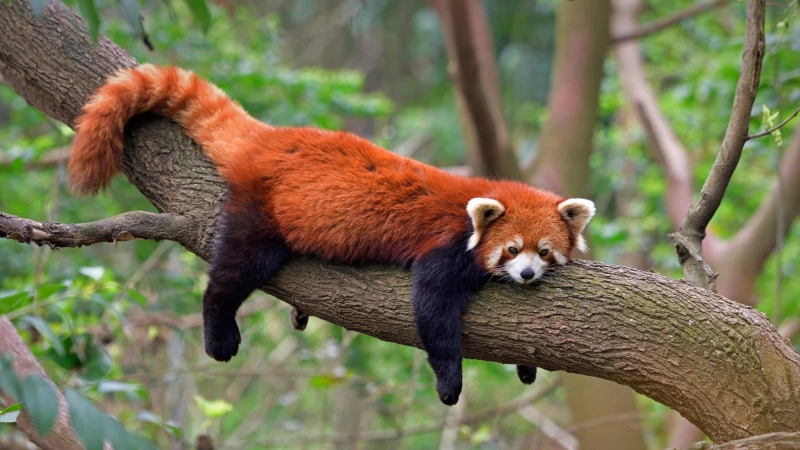
Wikipedia -
The Strawberry Poison Frog, strawberry poison-dart frog, or blue jeans poison frog (Oophaga pumilio, formerly Dendrobates pumilio) is a species of small poison dart frog found in Central America. It is widespread across its range, which includes Costa Rica, northeastern Panama, and eastern central Nicaragua. Large populations of the species are sometimes found in disturbed habitats like plantations, but they are most frequently seen in damp lowlands and premontane woodland.
Like the fruit for which it’s named, the majority of populations had red skin covered in black spots, while blue, green, yellow, and orange color variants were also found in the wild. Any creature that tries to feed on them will experience convulsions, paralysis, and even death due to their extremely strong toxin, which is produced via eating mites and ants. Before it's too late, stay clear of anyone with bright skin. During the reproductive season, the color pattern is also quite significant. The color pattern that matches their own is frequently chosen by females when looking for a mate.
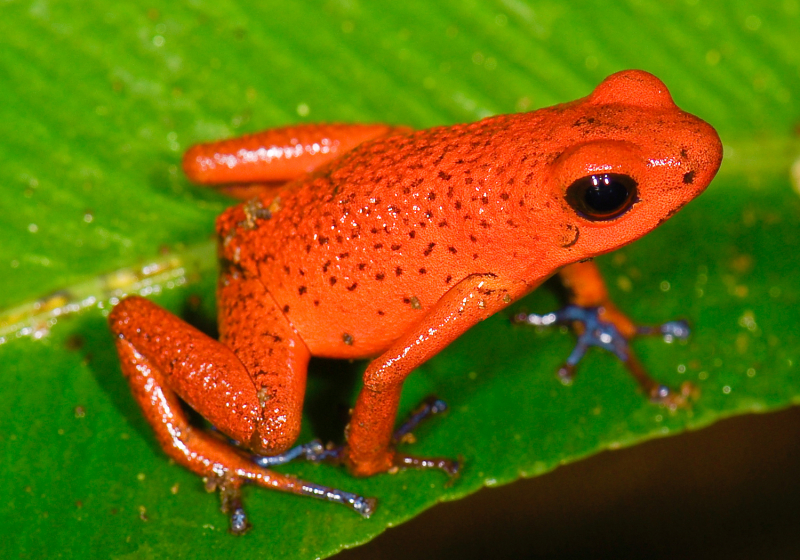
Wikipedia 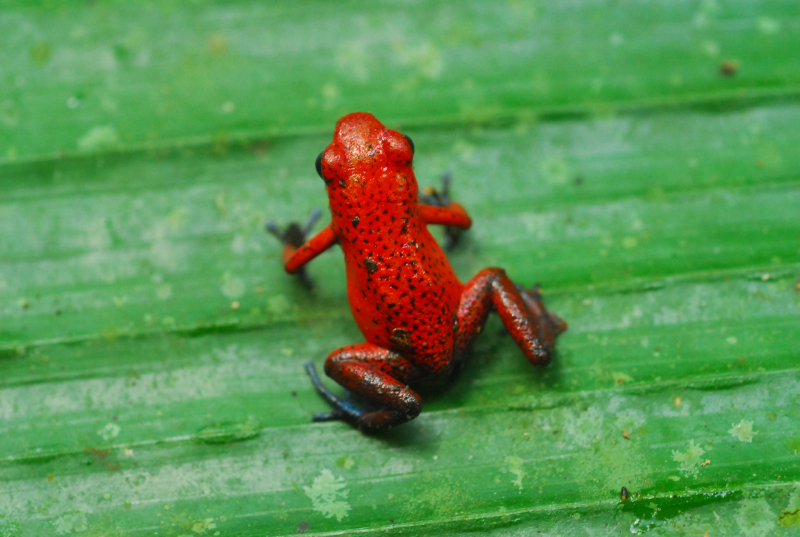
GRID-Arendal -
A type of leaf beetle known as the Scarlet Lily Beetle feeds on the leaves, stems, buds, and flowers of lilies, fritillaries, and other Liliaceae plants. It is also referred to as the Red Lily Beetle or Lily Leaf Beetle. It prefers to lay its eggs on Fritillaria and Lilium plants. In the absence of Lilium and Fritillaria species, fewer eggs are laid, and the survival rate of eggs and larvae is decreased. It is currently regarded as a pest in the majority of temperate climates where lilies are produced.
The adult lily beetle has rather long legs and antennae and is between 6 and 9 mm in length. It has vivid scarlet and lustrous elytra (harder forewings). Its head, legs, eyes, antennae, and underside are all covered with black. It features a broad abdomen, huge eyes, and a narrow thorax. There are 11 segments on each antenna. There are two grooves on the thorax and the eyes are notched.
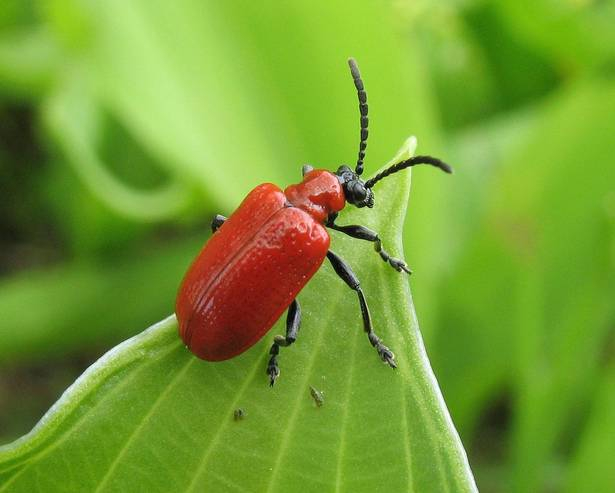
Candide 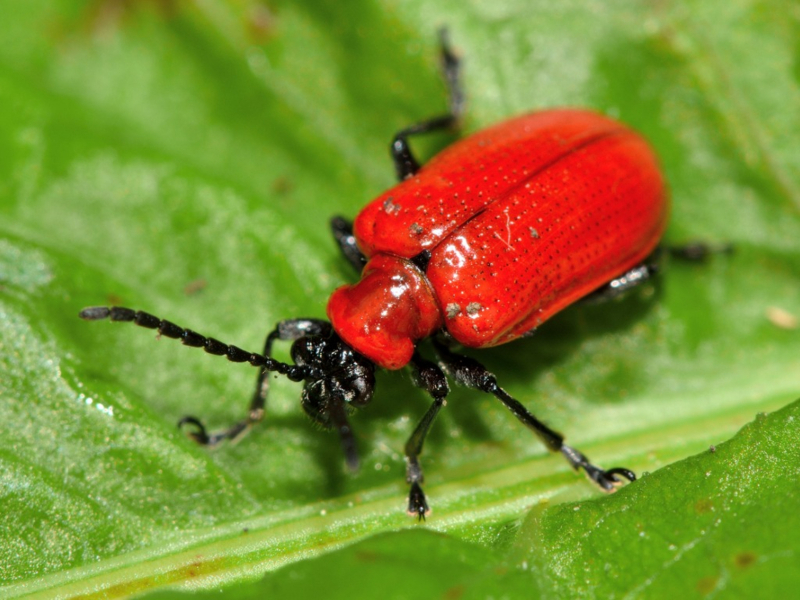
Gardening Know How












